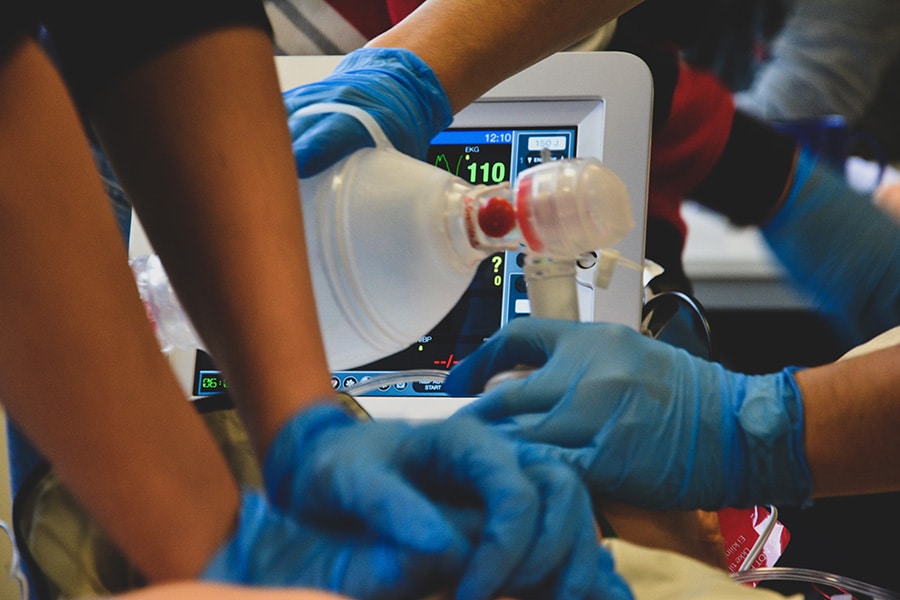October 26, 2023 min read

Top 5 High Acuity/Low Frequency Online EMS Courses
Industry:
Solution:

Keeping up with continuing education requirements for EMS recertification is critical for safeguarding EMS providers’ safety and preparedness while reducing liability risks for both the individual and the agency.
Vector Solutions’ EMS continuing education catalog features 250+ hours of CAPCE-accredited courses to ease recertification and ensure readiness with engaging and interactive video-based online courses covering a wide array of topics pertinent for EMS response.
While many medical emergencies follow common patterns, it’s the infrequently occurring ones that truly test the tenacity of EMS providers. This is why training EMS providers to respond to more uncommon medical scenarios is critical for achieving the best outcome.
Ensure Preparedness for Any Eventuality
The most acute EMS providers train for inevitable and uncommon medical emergencies.
Training EMS providers to respond to infrequently occurring medical emergencies is essential for ensuring patient safety, professional competence, and the ability to adapt to evolving medical knowledge and practices. It’s a fundamental aspect of their role in providing effective and comprehensive emergency medical care and should not be overlooked.
Boost your EMS providers’ confidence and competence to respond to any call effectively and efficiently with Vector Solutions’ comprehensive EMS catalog.
Here are 5 of the top courses from the EMS continuing education catalog that cover high acuity/low frequency skills essential for today’s EMS provider:
1. Medical Extrication and Rescue
Rescue and extrication operations can be very difficult for responding EMS personnel. These calls are often time-consuming, highly technical, stressful, and time-sensitive. Paramedics should possess the skills to remain calm while determining the best method for rescuing the patient, requesting additional resources, and executing their plan.
This course will discuss the phases of a rescue operation, the hazards involved with various types of rescues, and the strategies for a successful outcome. While rescue operations can be highly specialized in specific locations, terrains, and situations, this course focuses on the main principles common to all rescue and extrication operations.
2. Human Trafficking Basics for First Responders
Human trafficking is one of the world’s most appalling crimes against our social and moralistic beliefs, and it continues to degrade our society as it persists and spreads.
In this course, we seek to discuss and analyze the topic of human trafficking and how you, the first responder, can assist in identifying and investigating such incidents.
3. Incident Command System (ICS): with Applications for EMS
In the aftermath of the 9/11 attacks on the World Trade Center, Pentagon, and in Pennsylvania, the Incident Command System (ICS) was implemented across the United States to enable multiple responding agencies to better function as a unified force within the complicated and demanding environments of large-scale and mass-casualty incidents.
This course provides an overview of the incident command system with an emphasis on EMS operations.
4. Kinematics of Trauma
Traumatic injury is the leading cause of death of Americans, especially in persons under the age of 45, causing 214,000 deaths every year. This data equates to an individual dying every three minutes from a traumatic etiology. Trauma, in all its forms, led to 2.8 million hospitalizations, and nearly 28 million emergency department visits in the most recent year, as studied by the Centers for Disease Prevention and Control (CDC).
5. Gunshot Wounds and Bomb Blast Injuries
EMS providers at all levels are often faced with the challenge of responding to scenes of targeted violence and treating patients with gunshot wounds or blast injuries. Penetrating trauma caused by firearms presents a unique challenge for EMS personnel due to potential severity of gunshot injuries to the human body, complex implications in patient care, and the unpredictability of the scene during and after a violent incident has taken place. These dynamic and often volatile scenes create new and unique challenges for the responder.
This course will help prepare you for this response, by providing insight into the unique attributes of a bomb blast situation, and the injuries you might encounter.
Request a demo to see how Vector Solutions’ online EMS continuing education courses helps ease recertification and ensures providers stay safe, prepared, and effective for any situation.












